Intro
Discover key facts about Propranolol half life, including its pharmacokinetics, metabolism, and elimination. Learn how dosage, age, and liver function impact its duration, peak levels, and therapeutic effects, ensuring safe and effective treatment with this beta-blocker medication.
Propranolol is a widely used medication that belongs to the class of beta-blockers. It is primarily prescribed to manage conditions such as high blood pressure, angina, certain heart rhythm disorders, and other heart or circulatory conditions. Additionally, propranolol is used to prevent migraine headaches and to manage symptoms of anxiety and tremors. Understanding the half-life of propranolol is crucial for both healthcare providers and patients, as it influences dosing intervals, efficacy, and potential side effects. Here are key points to consider regarding the half-life of propranolol and its implications:
The half-life of a drug is the time it takes for the plasma concentration of the drug to reduce by half. For propranolol, the half-life can vary significantly among individuals due to factors such as age, liver function, and other health conditions. Generally, the half-life of propranolol is approximately 3 to 6 hours, but this can range from 2 to 12 hours in some cases. This variability is important because it affects how often the drug needs to be taken to maintain its therapeutic effect.
Introduction to Propranolol Half-Life
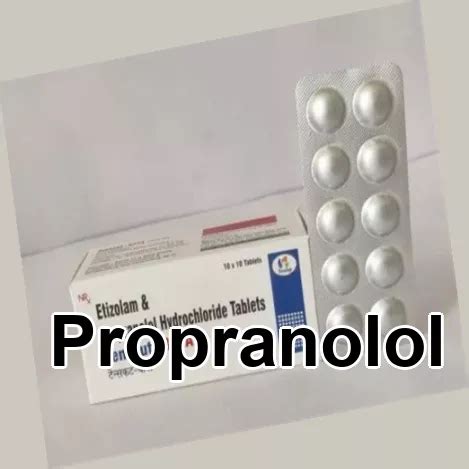
Propranolol's pharmacokinetics, including its absorption, distribution, metabolism, and excretion, play a significant role in determining its half-life. Propranolol is extensively metabolized by the liver, and its metabolism can be influenced by factors such as liver enzyme activity. This means that individuals with liver disease or those taking other medications that affect liver enzymes may experience alterations in propranolol's half-life.
Factors Influencing Propranolol Half-Life
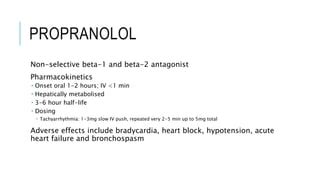
The dosage and formulation of propranolol can also impact its half-life. Propranolol is available in immediate-release and extended-release (sustained-release) formulations. The immediate-release form is typically taken three to four times a day, reflecting its shorter half-life. In contrast, the extended-release formulation is designed to release the drug more slowly, allowing for once-daily dosing and providing a more consistent plasma concentration over 24 hours.
Impact of Dosage Formulation
The choice between immediate-release and extended-release propranolol depends on the specific needs of the patient, including the condition being treated and the patient's ability to adhere to the prescribed regimen. Extended-release formulations can offer the convenience of less frequent dosing, which may improve compliance, especially for patients who have difficulty remembering to take multiple doses per day.Pharmacokinetics of Propranolol
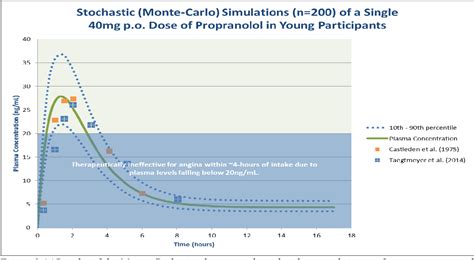
Understanding the pharmacokinetics of propranolol, including its half-life, is essential for optimizing its therapeutic effects and minimizing potential side effects. The drug's extensive first-pass metabolism means that a significant portion of the drug is metabolized by the liver before it reaches systemic circulation. This first-pass effect can lead to considerable variability in the bioavailability of propranolol, which is the fraction of the drug that reaches the systemic circulation in its active form.
First-Pass Metabolism and Bioavailability
The bioavailability of propranolol can range from about 25% to 40% for the immediate-release formulation, reflecting the impact of first-pass metabolism. This variability highlights the importance of individualizing the dose of propranolol to achieve the desired therapeutic effect while minimizing the risk of adverse effects.Clinical Implications of Propranolol Half-Life

The clinical implications of propranolol's half-life are significant, particularly in terms of dosing frequency and the potential for drug interactions. For instance, when initiating or discontinuing propranolol, it is essential to consider its half-life to avoid abrupt changes in plasma concentrations, which could lead to rebound effects or withdrawal symptoms.
Dosing Considerations
In practice, the dosing of propranolol is tailored to the individual patient, taking into account factors such as the severity of the condition being treated, the patient's response to the medication, and the presence of any side effects. For conditions like hypertension, the goal is often to achieve a consistent therapeutic effect throughout the day, which may involve adjusting the dose or switching between different formulations of propranolol.Interactions and Side Effects
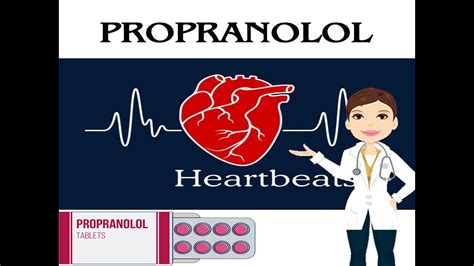
Propranolol can interact with a variety of other medications, and its half-life can be affected by drugs that influence liver enzyme activity. For example, drugs that induce liver enzymes can decrease propranolol's half-life, potentially reducing its effectiveness, while inhibitors of liver enzymes can increase propranolol's half-life, potentially leading to increased side effects.
Managing Drug Interactions
To manage potential drug interactions, healthcare providers must carefully consider the patient's entire medication regimen when prescribing propranolol. This includes monitoring for signs of increased or decreased propranolol effect and adjusting the dose as necessary to maintain therapeutic levels while minimizing the risk of adverse effects.Conclusion and Future Directions
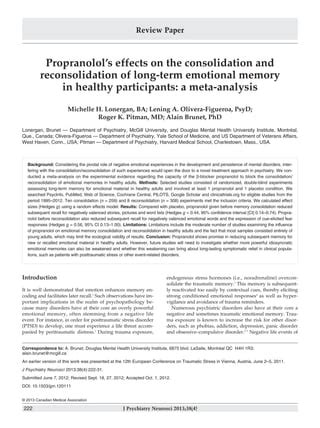
In conclusion, the half-life of propranolol is a critical factor in its clinical use, influencing dosing strategies, efficacy, and safety. As research continues to uncover the complexities of propranolol's pharmacokinetics and pharmacodynamics, healthcare providers will be better equipped to tailor treatment regimens to the individual needs of patients, optimizing outcomes and minimizing adverse effects.
What is the typical half-life of propranolol?
+The typical half-life of propranolol is approximately 3 to 6 hours, but it can range from 2 to 12 hours among different individuals.
How does liver function affect the half-life of propranolol?
+Liver function significantly affects the half-life of propranolol because the drug is extensively metabolized by the liver. Individuals with liver disease may experience a prolonged half-life.
Can the formulation of propranolol impact its half-life?
+Yes, the formulation of propranolol can impact its half-life. Extended-release formulations are designed to release the drug more slowly, providing a longer duration of action compared to immediate-release forms.
We invite readers to share their thoughts and experiences with propranolol, including any questions they may have about its use, half-life, and clinical implications. By engaging in this discussion, we aim to foster a community that supports informed decision-making and optimal use of this important medication. Please feel free to comment below or share this article with others who may benefit from this information.
